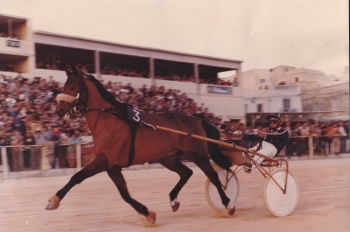
Seven months ago my physical health has been practically rocked by an unexpected heart attack. How come that a 39-year-old, a healthy and an energetic hospital chaplain, instead of going to his working place to serve the patients dramatically finishing up being treated as a patient? Almost on the verge of dying? Does this make sense? How would he cope during his convalescence? My experience as a patient taught me the healing power of metaphor.
In his article Language, Metaphor, And Pastoral Theology, Belden C.Lane wrote: “Metaphor is a particular form of language-play in which the familiar, commonplace, and down-to earth is used to speak in a striking, often shocking-- though incomplete and indirect--way, about the unfamiliar.... The processes involved in pastoral care and spiritual direction may be very different from those of psychotherapeutic intervention, but the creative--even shocking--use of metaphor in effecting change is quite similar”. This splendid description of metaphor kept me wondering why horse-racing played a significant part during my hospitalization.
When I was admitted to CCU, the first two days of my convalescence journey were difficult to put up with. Unfortunately, on my bed I could hardly move. The heart attack left me virtually glued to it. But, on the third day, precisely in the morning, I managed to get out of my prison and sit on the armchair. My bed number, eight, reminded me of Jesus’ resurrection, which, incidentally, also occurred in the morning. For me this was a big signal that my victory over the angina pectoris had actually taken place. I could now sit and move around the space of my bed with certain freedom and ability. What a heavenly bliss after such a tragedy!
Mater Dei hospital’s beds have the luxury of internet access. Or, to put it squarely, their designers were so much respectful of the patients’ dignity that they fulfilled their sacrosanct need and right of access of information. Spending all those hours on an armchair is certainly not a joke. Someone needs to be cheered up. Generally, in such situations, newspapers tend to frustrate me all the more. So I opted instead for something quite familiar to my beautiful childhood days. I went on the You Tube in order to watch some horse-races. To my happy surprise, the more I watched the races the more I could relate my slow but steady recovery with the trotting horses I enjoyed watching.
The first horse which literally captured my attention was undoubtedly the great Maltese champion of the eighties Isard Du Pont. I was basically fascinated by his robust perseverance. Many a time he would win a race on the finishing line. Fully believing in the horse’s capacity to sprint at the right time of the race, Isard Du Pont’s astute jokey, Raymond Clifton, was wise enough to spur his phenomenal horse to speed up at the propitious moment and arriving perseveringly ahead of everyone till the end.
Isard Du Pont’s inspiring perseverance helped me realize that if I wanted to get out of the hospital to resume my life as normal as possible I too had to nourish the proper attitude so as to hasten my recovery and successfully integrate myself in the hustle and bustle of my daily and ministerial life. The Maltese champion aided me greatly to trust in the expertise of the medical staff, which was gently leading me to a lifelong outstanding victory. Complying wholeheartedly with their guidance was my responsible response to execute. Thus, Stephen C Campbell was definitely on the right track when he wrote:
“Perseverance also requires the ability and determination to adjust to different circumstances and environments, despite the difficulties that adapting may bring. Strong character and determination are also needed in order to successfully adapt to different circumstances; the ability to make the best out of what there is despite limited resources”.
The second horse which communicated to me the compelling power of the equine image was the magnificent French champion, Général du Pommeau. Driven by the crafty driver, Jules Lepennetier, this exceptional champion took everyone by surprise in choosing the right timing to sprint victoriously. A telling example of what I am saying was his famous victory in the prestigious Prix d’Amerique race of the year 2000. In the last 500 metres, Jules Lapennetier skillfully maneuvered his powerful horse, who instantly answered to his jokey by doing a formidable sprint that sent the numerous French spectators in a euphoric jubilation.
The great American former track and field athlete, winner of 10 Olympic and World Championships medals, Carl Lewis, said that life is about timing. I can easily apply his practical wit to my life experience. Had I not arrived on time at the hospital when I suffered the heart attack, on May 4, I would surely not have been able to write these few reflections concerning what I experienced. Timing was an essential key factor for my survival.
The equine metaphor triggered me to think more deeply regarding the new life I was miraculously given to live by the angioplasty. Even if incomplete and somehow indirect, the equine metaphor greatly assisted me in unveiling the striking vitality of human life. Life must be respected by making the best out of it, as, after all, Isard Du Pont and Général du Pommeau, did exploit their horse-races to their own advantage. These two champions both excelled because they timed their perseverance and acted accordingly. Am I not now in an excellent position to plan my life and live its plan perseveringly?
Fr Mario Attard OFM Cap


